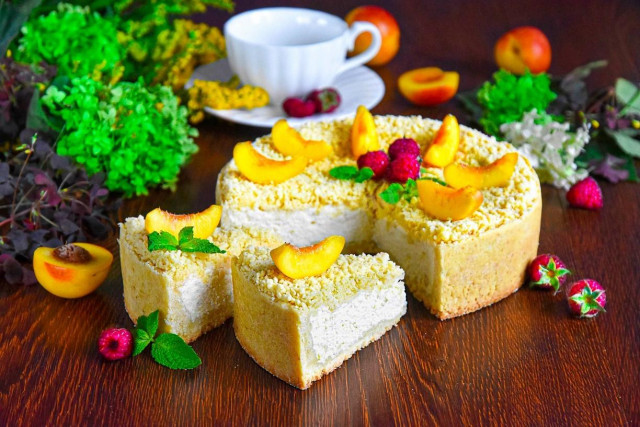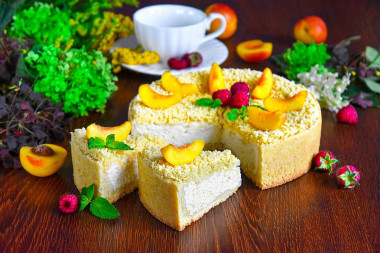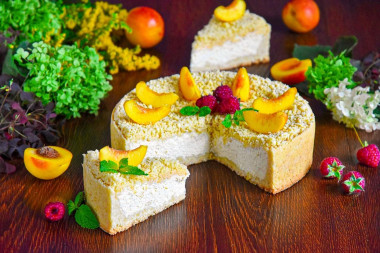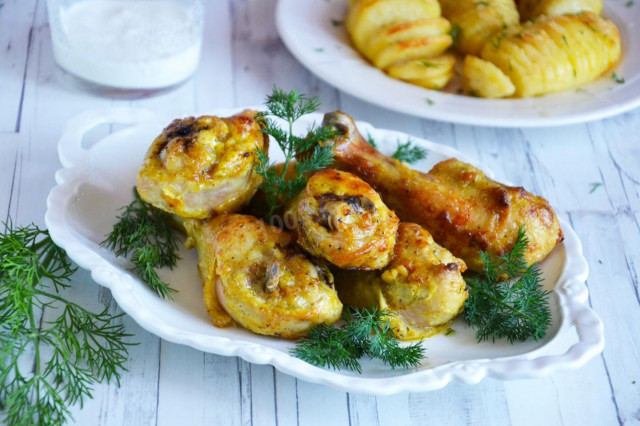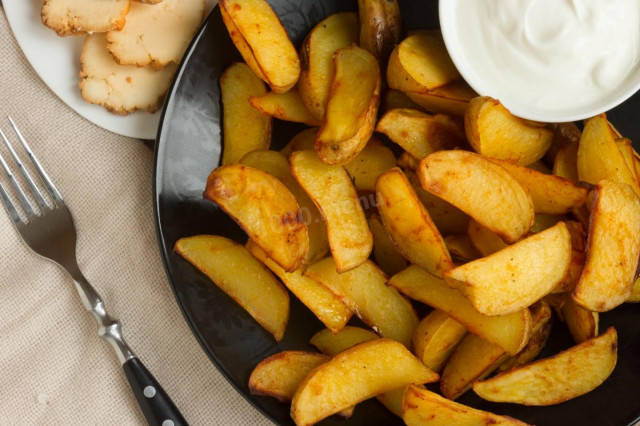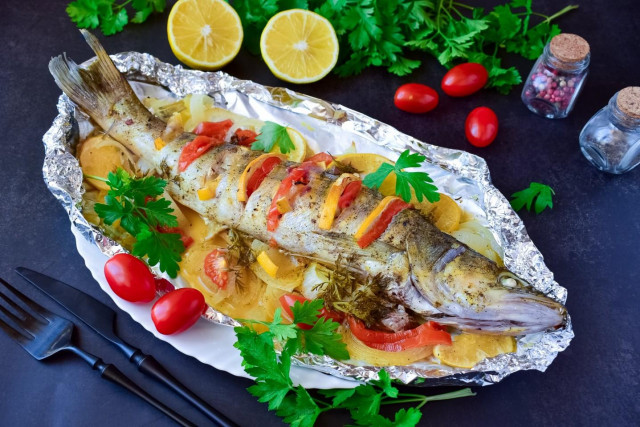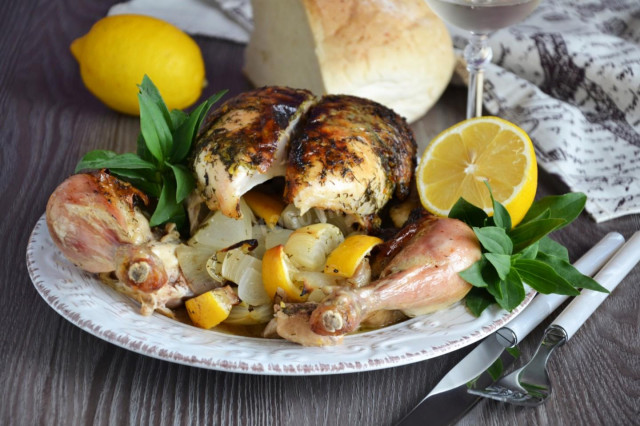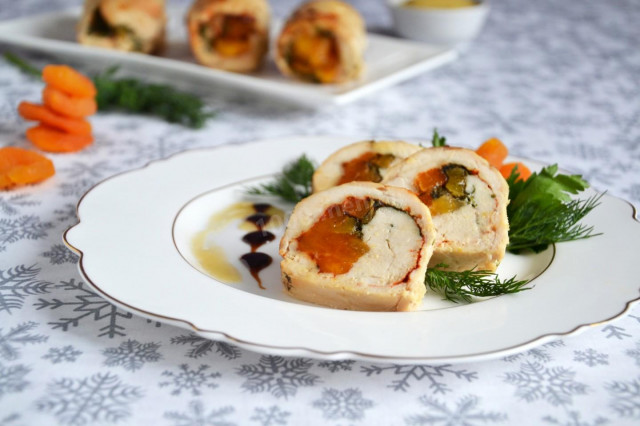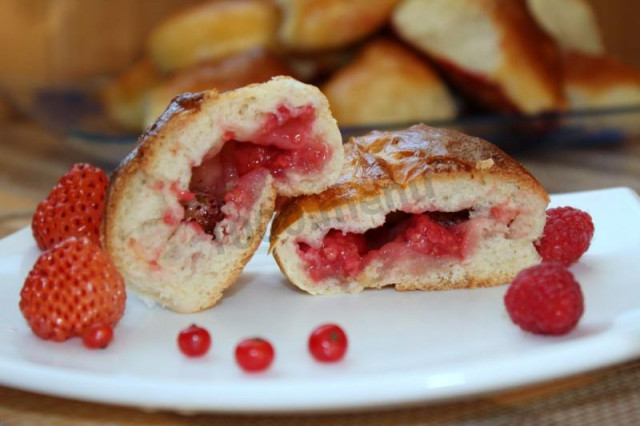Composition / ingredients
Step-by-step cooking
Step 1:
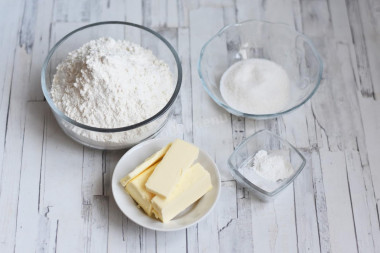
How to make royal cheesecake with cottage cheese at home? Easy as pie. First, prepare the necessary ingredients according to the list. Take the flour of the highest grade. The oil should be cold.
Step 2:
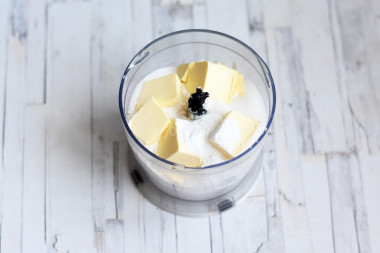
Add flour, sugar and vanilla sugar to the blender bowl, add diced cold butter, add soda and salt.
Step 3:
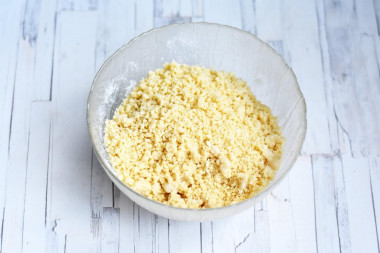
Whisk everything to a state of moist crumbs. If the crumbs are too loose and small, add 1-2 tablespoons of cold water and whisk everything again. The crumb will turn out to be wetter and larger. But she must not get into a ball. If you get large downed lumps as a result, then there is too much water. You need to add 1 tablespoon of flour and beat again. Put the crumb in the refrigerator.
Step 4:
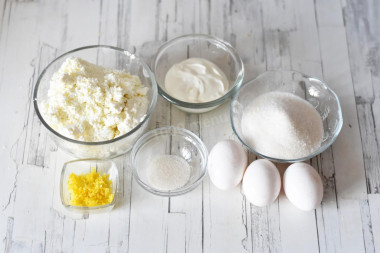
Now prepare the necessary ingredients for the filling. It is better to take cottage cheese with a fat content of 5% or higher. Take sour cream with a fat content of 15% and above. Eggs need large selected ones. If the eggs are small, take 1 more.
Step 5:
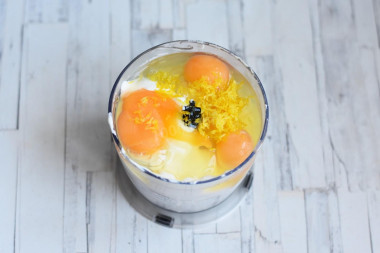
Put cottage cheese, two types of sugar, sour cream, eggs and lemon zest in a blender bowl.
Step 6:
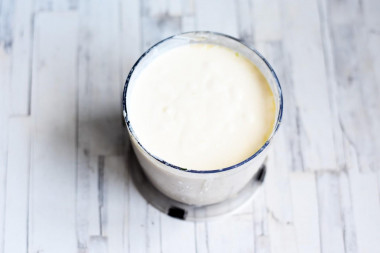
Whisk everything until a homogeneous viscous mass is obtained. Instead of a blender, you can use a mixer or a kitchen machine. But in this case, the cottage cheese will need to be wiped through a sieve to avoid lumps. Still, I advise you to use a blender - the filling will rise in just a minute.
Step 7:
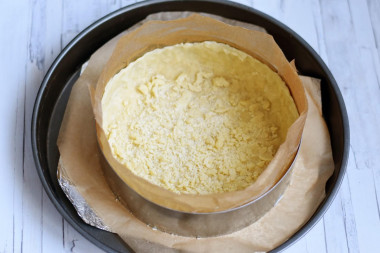
In a baking dish lined with parchment with a diameter of 20-21 cm (I have a cooking ring instead of a split mold), pour out most of the crumbs, about 3/4. Form the bottom and sides.
Step 8:
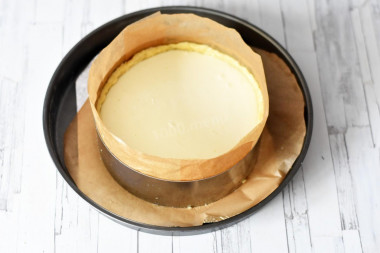
Pour the curd filling on the dough. It should not be higher than the sides of the dough. Ideally, the sides should at least slightly rise above the filling, because during the baking process the filling will rise slightly.
Step 9:
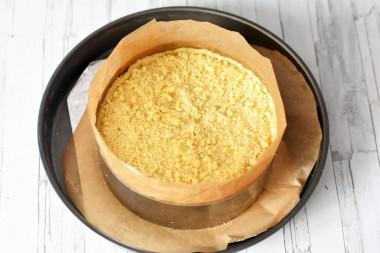
Sprinkle the remaining crumbs on top of the pie. Bake the cheesecake in preheated to 170 °In the oven for about 45 minutes. The filling should grip well, and the top should be browned. The exact time depends on your oven.
Step 10:
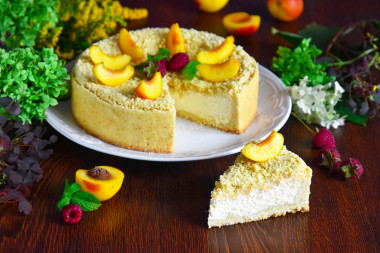
Remove the pie from the oven and cool at room temperature. Then refrigerate for 4-5 hours or overnight. Cut the cooled cheesecake into pieces and serve it to the table. Bon appetit!
Be prepared for the fact that you may need more or less flour than indicated in the recipe. Focus not on the amount of flour, but on the desired consistency of the dough. To avoid mistakes, read about flour and its properties!
Keep in mind that everyone's ovens are different. The temperature and cooking time may differ from those specified in the recipe. To make any baked dish successful, use useful information about the features of ovens !
Is it possible to replace baking powder with soda, how to add them correctly so that the baking is lush, how to avoid an unpleasant soda taste and much more, read the article "Baking powder or baking soda - which is better?"
Calorie content of the products possible in the dish
- Sour cream with 30% fat content - 340 kcal/100g
- Sour cream with 25 % fat content - 284 kcal/100g
- Sour cream with 20 % fat content - 210 kcal/100g
- Sour cream of 10% fat content - 115 kcal/100g
- Sour cream - 210 kcal/100g
- Chicken egg - 157 kcal/100g
- Egg white - 45 kcal/100g
- Egg powder - 542 kcal/100g
- Egg yolk - 352 kcal/100g
- Ostrich egg - 118 kcal/100g
- Cottage cheese of 40% fat content - 466 kcal/100g
- Cottage cheese of 20% fat content - 233 kcal/100g
- Cottage cheese of 18% fat content - 226 kcal/100g
- Cottage cheese of 10% fat content - 156 kcal/100g
- Low-fat cottage cheese - 75 kcal/100g
- Cottage cheese with sour cream - 260 kcal/100g
- Fruit cottage cheese - 147 kcal/100g
- Soft dietary cottage cheese - 170 kcal/100g
- Cottage cheese "vitalinia" - 64 kcal/100g
- Cottage cheese "morning" ( "danone") without sugar - 91 kcal/100g
- Cottage cheese - 156 kcal/100g
- Whole durum wheat flour fortified - 333 kcal/100g
- Whole durum wheat flour, universal - 364 kcal/100g
- Flour krupchatka - 348 kcal/100g
- Flour - 325 kcal/100g
- Granulated sugar - 398 kcal/100g
- Sugar - 398 kcal/100g
- Butter 82% - 734 kcal/100g
- Amateur unsalted butter - 709 kcal/100g
- Unsalted peasant butter - 661 kcal/100g
- Peasant salted butter - 652 kcal/100g
- Melted butter - 869 kcal/100g
- Salt - 0 kcal/100g
- Baking powder - 79 kcal/100g
- Lemon zest - 47 kcal/100g
- Vanilla sugar - 379 kcal/100g

